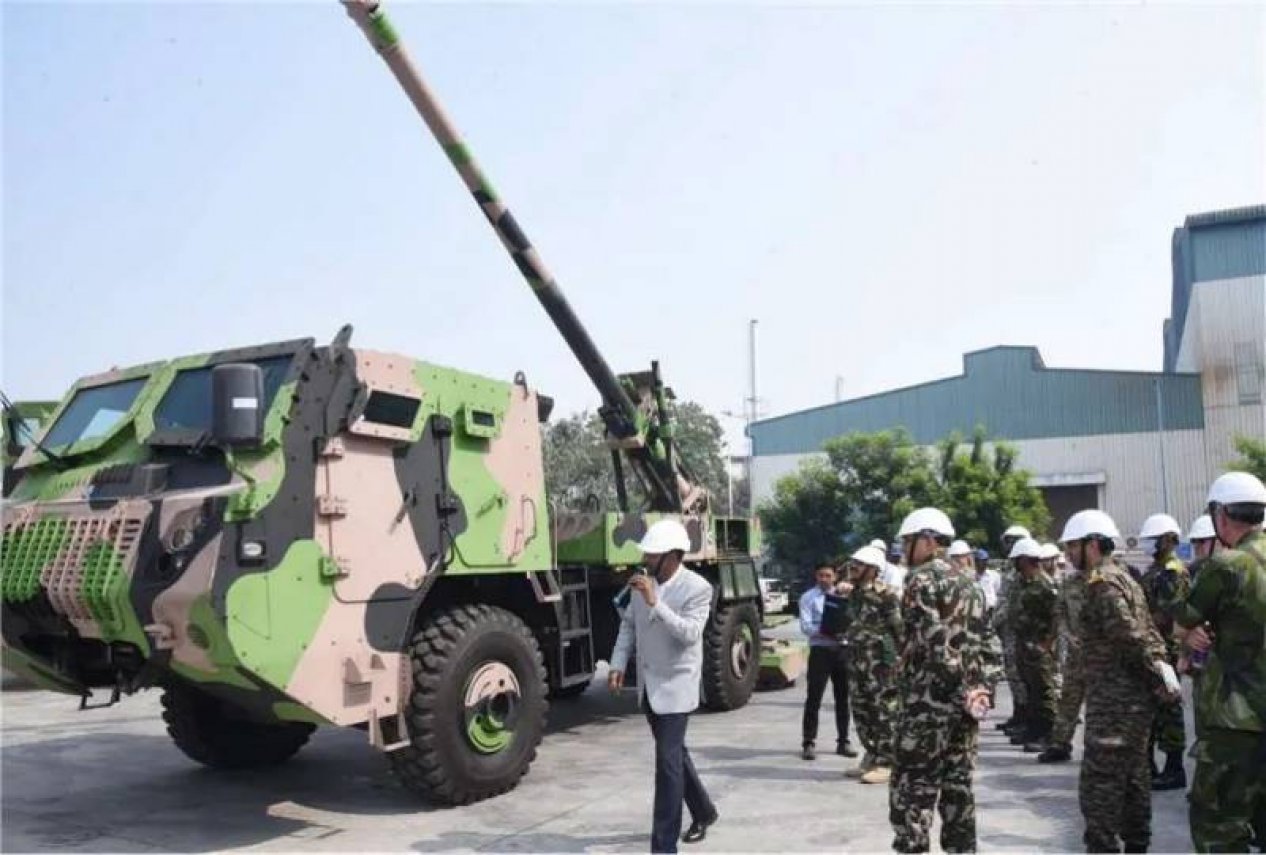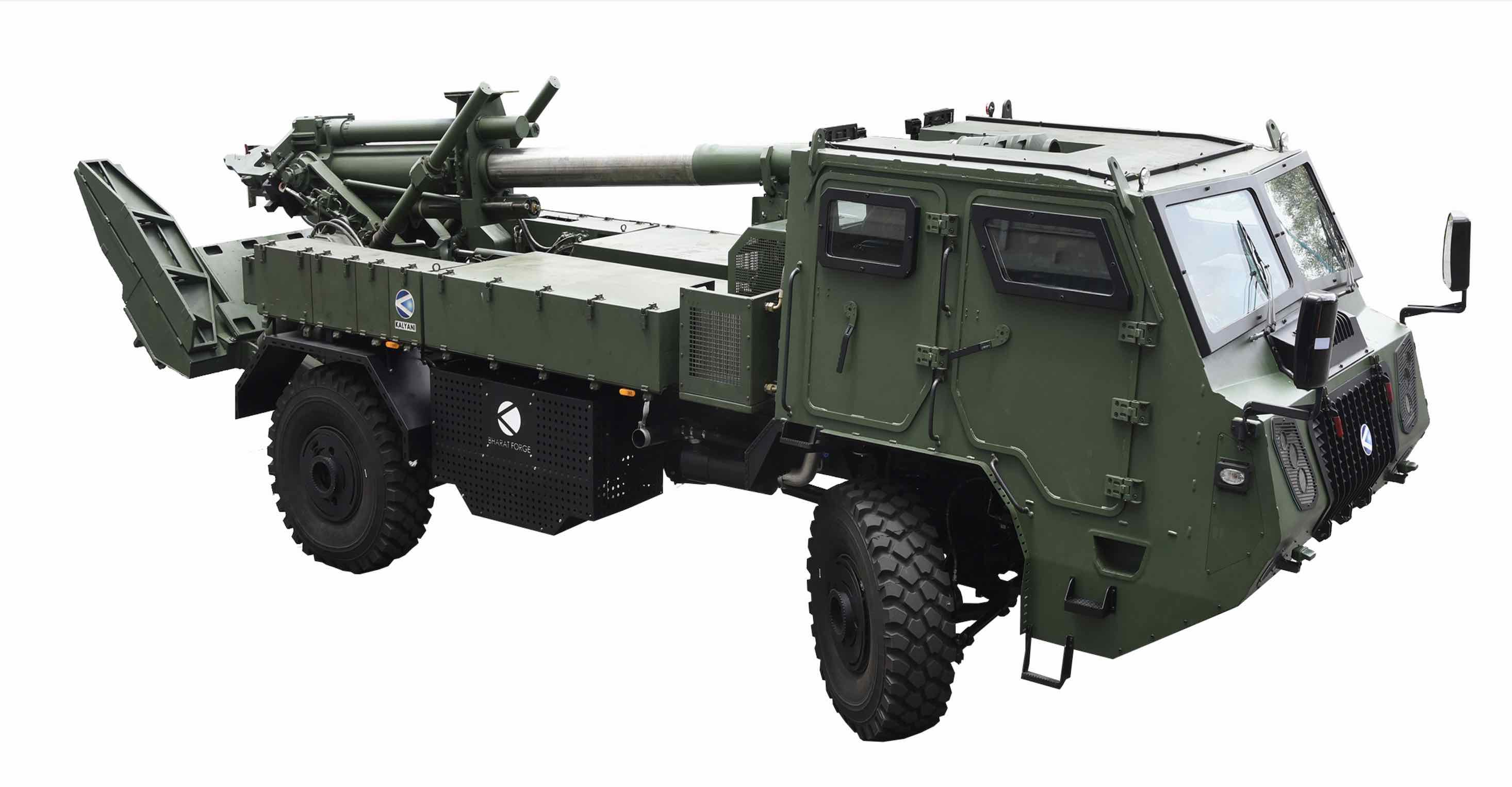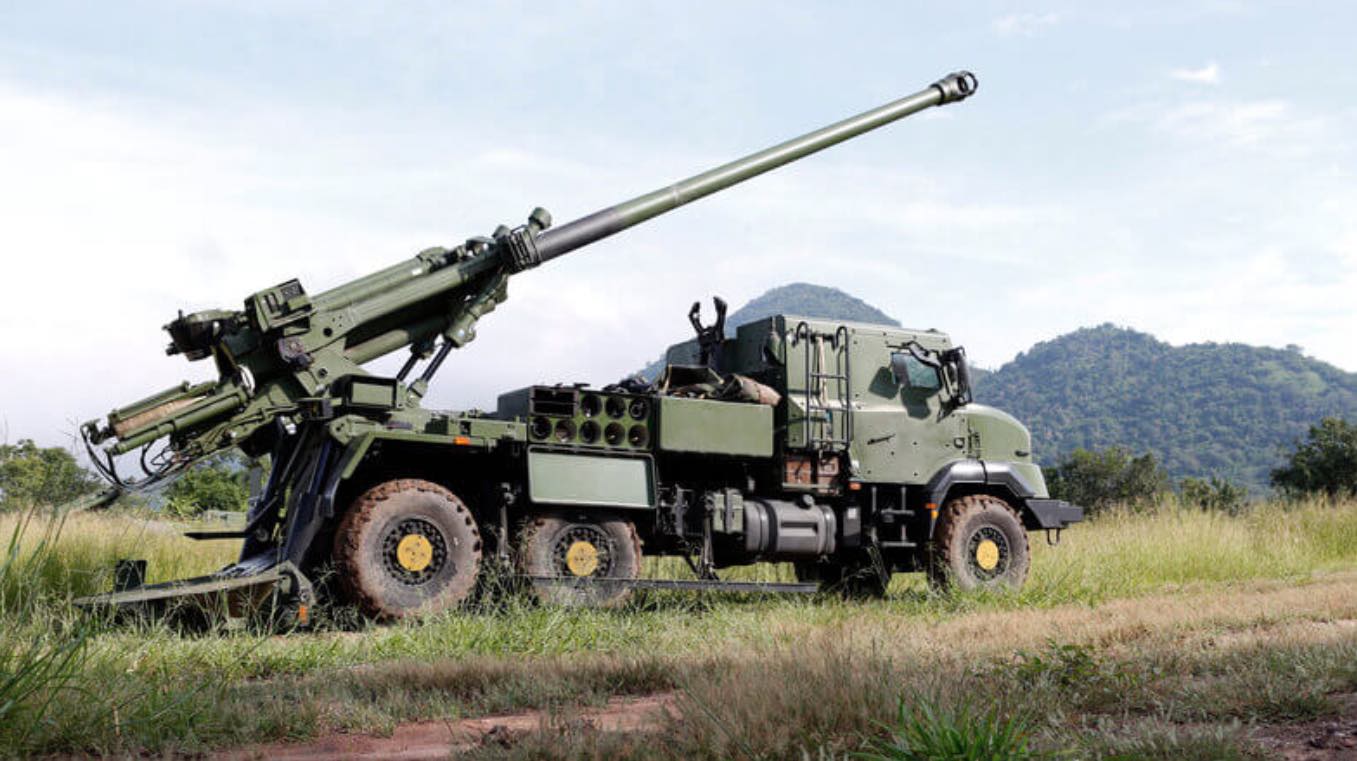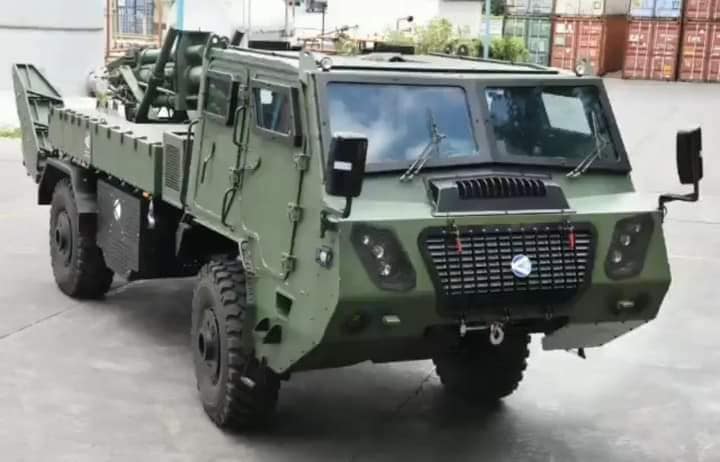
Indian Defense Company Bharat Forge Kalyani Group has confirmed a major export deal with Armenia. The agreement includes the sale of the advanced MArG 155 wheeled self-propelled howitzers and ATAGS 155mm towed guns, marking a new chapter in India-Armenia defense relations.
This deal follows Armenian Defense Minister Suren Papikyan's visit to the DefExpo-2022 in Gandhinagar, India, in October 2022, where India showcased its locally manufactured armaments and defense systems. The visit underscores the deepening military ties between the two nations, which have been on an upward trajectory.
The recent arms deal is part of a series of defense contracts between India and Armenia. In September 2022, Armenia signed a $245 million contract with India for the purchase of Pinaka multi-barrel rocket launchers, anti-tank rockets, and various types of ammunition. This followed a 2020 agreement where Armenia acquired four Swathi mobile radar units from India for $40 million, a deal that was recognized by the Stockholm International Peace Research Institute.

India's emergence as a significant defense equipment supplier is highlighted by these deals, showcasing its capabilities in military hardware and technology, according to Indian media. The partnership also extends to joint exercises and training programs, enhancing interoperability and understanding of military tactics and strategies between the two countries.
The MArG 155mm / 39 cal - BR represents a leap in artillery technology, combining power, precision, and mobility. Equipped with a 155mm 39 caliber gun and a 4 x 4 wheeled chassis, it offers exceptional all-terrain maneuverability. Its ability to negotiate gradients up to 30° and its "shoot and scoot" capability make it a versatile and formidable weapon in modern combat scenarios.
Weighing 18 tons and capable of firing a complete range of NATO standard and in-service ammunition, the MArG 155mm / 39 cal - BR is both robust and adaptable. It can carry 18 rounds with Zone 5, ensuring sustained firing operations without immediate resupply. Its rapid deployment capability, taking only 1.5 minutes during the day and 2 minutes at night, is crucial for responding swiftly to battlefield demands.
The India-Armenia defense relationship is a testament to India's growing role in the global defense sector and Armenia's strategy to diversify its defense partnerships. This collaboration not only strengthens defense ties but also contributes to regional stability and security, reflecting the increasing importance of strategic and defense ties in their bilateral relations, according to the Indian media.
Faktyoxla Lab. (Factcheking LAB.)has tried to find out whether military cooperation between India and Armenia would contribute to regional stability.
Let's start with the fact that on November 9, 2022, Indian media reported that India’s private defense player Kalyani Strategic Systems bagged an export order worth $155 million (over Rs 1,200 crore) for artillery guns from an unspecified country. In a regulatory filing, Bharat Forge, part of the Kalyani Group, said this order is for a “non-conflict zone”. The company also said the order for the 155 mm artillery gun platform is to be executed over a three-year time period.
Bharat Forge has neither announced the name of the buyer country, nor the type of gun being exported. However, Indian Ministry of Defence (MoD) sources have confirmed that the buyer country is Armenia and the order consists of 155 mm, 39 calibre howitzers that are mounted on trucks for mobility.
The current contract for the purchase of 155-mm/39 self-propelled howitzers MArG 155 - BR has become the third known significant Armenian defense order in India - earlier in September it was reported that Armenia had signed a contract worth more than $250 million for the purchase of 214- mm Pinaka multiple launch rocket systems and rockets for them, anti-tank missile systems and various ammunition. And at the beginning of 2020, Armenia signed a contract worth about $40 million for the purchase of four Indian ground-based Swathi Weapon Locating Radar (WLR) artillery position detection radar stations.

By the way, the possible acquisition of Pinaka systems by Armenia was first discussed in the summer of 2018, when an Armenian military delegation that arrived in India showed obvious interest in this weapon.
In August 2018, the Times of India newspaper wrote about this, reporting that the Armenian delegation in India a month earlier visited the Pokhran military training ground in the state of Rajasthan, where the Armenian military observed the firing of Pinaka complexes. "The results were excellent," a senior official at India's Department of Defense Research and Development told the newspaper. According to information available in open sources, Pinaka systems appeared in service with the Indian Army in the early 2000s, replacing Soviet-made rocket artillery systems, in particular the Grad installations. According to Indian sources, the range of the rocket systems sold to Armenia reaches 60 kilometers, each of them is capable of firing 12 missiles in 44 seconds and is designed to destroy manpower, heavy equipment, and enemy command posts.
“Although this is a fairly modest order - about $260 million, the important fact is that weapons and ammunition are being sold to Armenia in the context of the current conflict. In addition, this is the first time that Pinaka missile systems have been exported, which can be considered a turning point. This indicates the quality features of this weapon. In addition, the fact that a country in conflict with another state orders these weapons is in itself eloquent,” military expert Shiv Aroor said on the Indian TV channel India Today.
It is worth noting that after Armenia was practically deprived of Russian military supplies, Yerevan now seriously hopes that India will help provide the defeated Armenian army with weapons.
On the one hand, it is obvious that the purchase of weapons by Armenia is unlikely to be of great importance for the Indian side, whose plans include military supplies to countries in Africa and the Indian Ocean basin. Defense Minister Rajnath Singh spoke precisely on this issue, saying that India would turn from a major importer into a leading arms exporter. By the way, at one time India was an active importer from Russia, but over the past ten years its dependence on Russian weapons has decreased, and it began to purchase them more often from France, Israel, the US and the UK.
On the other hand, by arming Armenia, India, of course, called into question its relations with Azerbaijan, with which it has long-standing diplomatic ties and trade and economic cooperation. India does not hesitate to arm the aggressor country, despite the tension in Armenian-Azerbaijani relations and being sufficiently aware of Armenia’s aggressive policy.

Suffice it to remember that India showed neutrality towards the Armenian-Azerbaijani conflict only in the first years after the end of the First Karabakh War, but did not adhere to this line for long, soon reconsidering its position in favor of Armenia.
It was India in March 2008 that for the first time openly sided with Armenia, rejecting at a meeting of the UN General Assembly the resolution proposed by Azerbaijan, which recognized the so-called “NKR” as a territory occupied by Armenian forces. Then only seven states voted against this decision, and this forced Azerbaijan to regard India’s actions as support for separatism. New Delhi’s inconsistent policy on such a sensitive issue for Azerbaijan, although it didn’t then become a reason for the severance of relations between the two countries, nevertheless led to a certain cooling in them.
Despite that Baku did not take drastic steps, later, during the Second Karabakh War, India began to provide information support to Armenia, covering events from a pro-Armenian position. Armenian media, for example, published an article about how Indian students studying in Yerevan collected humanitarian aid for Armenian soldiers. And the publication India Today wrote that if the Armenians fail to stop the pro-Turkish mercenaries who came to Karabakh (???-ed.), tomorrow they may find themselves up in arms in Kashmir.
Accepting the credentials of the new Indian Ambassador Sridharan Madhusudhanan in May of this year, Azerbaijani President Ilham Aliyev brought to his attention that today revanchist forces are raising their heads in Armenia and territorial claims against Azerbaijan continue. Stating that Armenia's rapid armament creates new dangers, the head of state noted: “If Armenia really wants peace with Azerbaijan, then why is it acquiring weapons worth hundreds of millions of dollars?” The president of Azerbaijan emphasized that this policy could lead to new threats to the region.

To date, no peace agreement has been signed between Azerbaijan and Armenia. Practical issues such as delimitation and demarcation of borders have also not been resolved. In such a situation, arms supply to Armenia may serve as a signal that Yerevan is not ready to sign the peace treaty.
Thus, India becomes one of the countries that supports Armenia's revanchism.
Arms supplies in an attempt to change the balance of power in the South Caucasus will lead to an even greater arms race in the region, attract greater attention from other regional powers and intensify attempts to infiltrate the region by third powers, in particular Western countries. In this way, India is artificially creating uncertainty and tension instead of helping to build peace. In fact, Delhi is encouraging Armenia to carry out new, even greater provocations, further worsening the situation in the South Caucasus and pushing the region towards a potential and dangerous escalation.
India, while publicly speaking about international law, in the South Caucasus openly supports the policy of inciting military conflict and disrespecting the territorial integrity of countries. At the same time, without also paying attention to the fact that this goes against the principles of the Bandung Conference and the Non-Aligned Movement, of which India is a member. Moreover, it was Nehru who was at the origins of the creation of the NAM.
Time will tell whether the Indian leadership will have enough political wisdom and tact to abandon the unenviable prospect of cooperation with Armenia and try to regain the favor of Baku in order to restore mutually beneficial cooperation with Azerbaijan.




















